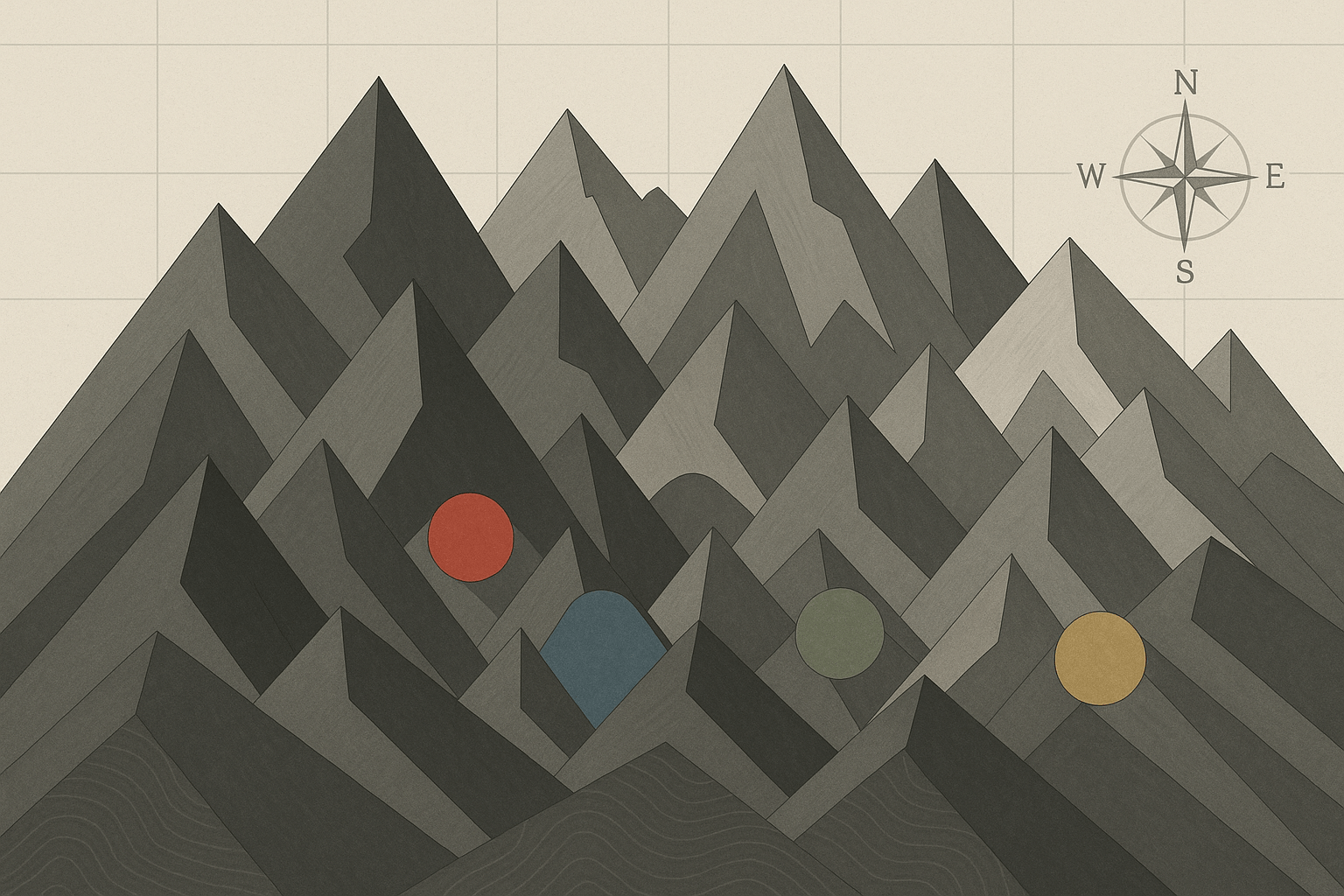The Great Wall of Rock and Snow
To understand the languages of the Caucasus, you must first understand the mountains themselves. The region is dominated by two massive ranges: the Greater Caucasus to the north, forming a formidable barrier with Russia, and the Lesser Caucasus to the south. The Greater Caucasus is a true alpine wilderness, a wall of rock and ice stretching for over 1,100 kilometers. It boasts Europe’s highest peaks, including Mount Elbrus at a staggering 5,642 meters (18,510 feet).
This isn’t a gentle, rolling landscape. It’s a vertical world of deep, narrow gorges, isolated plateaus, and valleys that, until the modern era, were often impassable for much of the year. For centuries, a community living in one valley might have had little to no contact with a village just a few kilometers away as the crow flies, but separated by a 4,000-meter ridge. This extreme topography is the single most important factor in the region’s linguistic story. While empires rose and fell on the flat plains to the north and south—Scythians, Romans, Persians, Mongols, Ottomans, Russians—their armies and influence often broke against this mountain wall. Peoples fleeing these invasions found refuge in the high valleys, preserving their cultures and, most critically, their languages in near-total isolation.
A Babel of Indigenous Tongues
This geographic isolation created a perfect laboratory for linguistic evolution. As small groups remained separated for generations, their speech drifted and evolved into entirely new, mutually unintelligible languages. The result is three unique, indigenous language families found nowhere else on earth.
- Kartvelian (South Caucasian): The most widely spoken group, this family is dominated by Georgian, the official language of Georgia. Georgian boasts a beautiful and unique alphabet (the Mkhedruli script) and a rich literary tradition dating back to the 5th century. Its sister languages include Svan, spoken in the high mountain region of Svaneti in Georgia, as well as Mingrelian and Laz, spoken in western Georgia and neighboring Turkey.
- Northwest Caucasian (Abkhaz-Adyghe): Famous among linguists for their staggeringly complex consonant systems, these languages often have 80 or more consonants but only two or three distinct vowels. The family includes Abkhaz and Adyghe (also known as Circassian). Tragically, it also includes Ubykh, a language that once had 84 consonants but whose last native speaker, Tevfik Esenç, died in 1992, rendering it extinct.
- Northeast Caucasian (Nakh-Daghestanian): This is the most complex family of all, representing the peak of Caucasian linguistic diversity. It includes the Nakh languages of Chechen and Ingush. Its other branch, Daghestanian, is a testament to the region’s geography. The Russian republic of Dagestan, whose name means “Land of Mountains”, is home to over 30 languages, such as Avar, Dargin, Lezgin, and Lak. In some areas, nearly every valley or even village has its own distinct language, a direct result of centuries of mountain-enforced separation.
Woven into this indigenous tapestry are languages from other families that have also found a home in the Caucasus, including Indo-European languages like Armenian and Ossetian (descended from the ancient Scythians), and Turkic languages like Azerbaijani and Karachay-Balkar, making the region a true linguistic crossroads.
Mapping the Fortress: Nations and Fault Lines
The human geography of the Caucasus is as complex as its physical terrain. The region is broadly split into two parts:
The South Caucasus (or Transcaucasia) is comprised of three independent nations:
- Georgia: With its capital, Tbilisi, nestled in a valley on the Mtkvari River. It is the heartland of the Kartvelian languages.
- Armenia: A landlocked nation centered around its capital, Yerevan. It is home to the ancient Armenian language, a unique branch of the Indo-European family.
- Azerbaijan: Located on the Caspian coast, its capital, Baku, is famed for its oil wealth. Its dominant language, Azeri, is a Turkic language.
The North Caucasus is part of the Russian Federation, administered as a collection of ethnic republics, each named for its titular nationality. This is where the true linguistic fragmentation is on display, with republics like Chechnya (capital: Grozny), Ingushetia, North Ossetia-Alania, and, of course, the hyper-diverse Dagestan (capital: Makhachkala).
When Fortresses Become Battlegrounds
The same geographic features that protected this incredible diversity have also fueled division and conflict. The mountains that served as a refuge also reinforced sharp ethnic and linguistic identities, creating deep-rooted fault lines. When political boundaries drawn by outside powers (like the Soviet Union) failed to align with these ancient cultural landscapes, tensions were bound to erupt.
The fortress walls that once kept invaders out became the dividing lines in brutal modern conflicts. The fierce Chechen wars for independence from Russia, the ongoing dispute between Armenia and Azerbaijan over the Nagorno-Karabakh region, and the secessionist conflicts in Georgia’s regions of Abkhazia and South Ossetia are all, in part, tragic legacies of this geography. Strong identities, forged in isolated mountain valleys, are not easily relinquished or merged into larger state structures.
A Living Museum
The Caucasus remains a breathtaking testament to the interplay of geography and human culture. It is a mountain fortress that has guarded an unparalleled treasure of linguistic heritage. Visiting the region is like stepping into a living museum where the echoes of ancient migrations, epic histories, and human resilience can be heard in the dozens of different tongues spoken in its high valleys. While globalization and political turmoil present challenges to the survival of many of these languages, the mountains stand as a powerful symbol of the endurance and diversity of the human voice.
